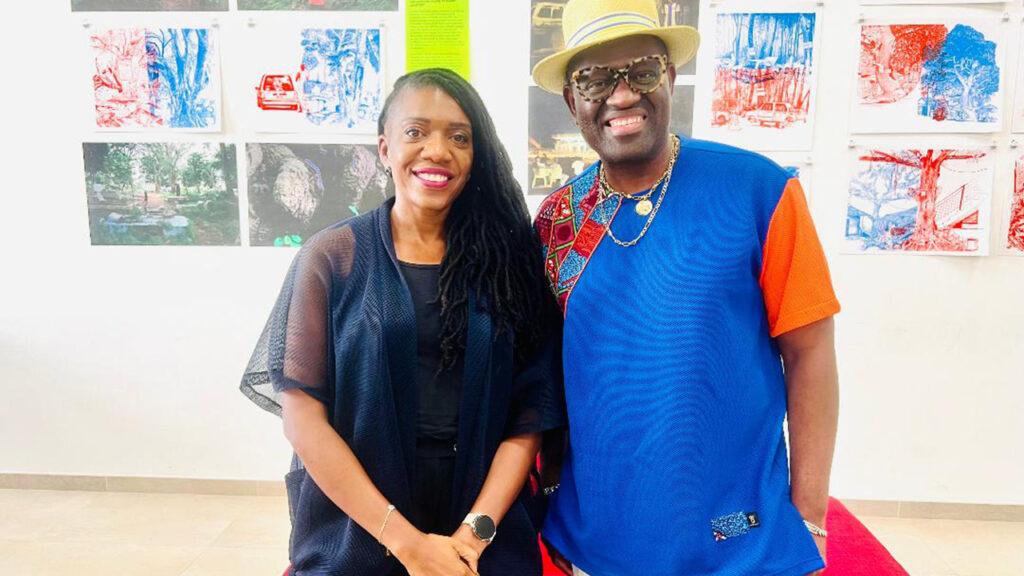
Of all the Yoruba textile creations, adire, literally that-which-is tied-and-dyed, is the most decorative. The Yoruba produce ofi, sanyan, kijipa and many others, but none accommodates the descriptive and expressive fibre of Yoruba thought and practices like adire, a fabric associated with the ancient city under the rocks, Abeokuta, one of the most notable of Yoruba cities, as well as Ibadan and Ogbomoso.
Although in the beginning, adire knowledge probably came from Ibadan, Abeokuta remains the smithy in which adire is forged, the site of its evocativeness and expression.
This is no sweet-talking: in expressing the vitality, versatility and essence of the Yoruba world — its norms, ethos, its flora and fauna — adire simply has no equal, although ofi/aso oke remains at the pinnacle of traditional Yoruba wear.
Adire is an indigo-dyed cloth made by Yoruba women using a variety of resist-dyeing techniques. In its earliest forms, it used to be tied designs on cotton cloth handspun and woven locally, but the activities of colonialists, who imported shirting material, the introduction of free education by the Action Group government and the pragmatics of trade and war, were all soon to impact the production, its reach and use as a traditional wear.
As historians inform, its world expanded rapidly with the introduction of a broader color palette of imported synthetic dyes in the second half of the twentieth century, accommodating a rich variety of hand-dyed textiles using wax resist batik methods to produce patterned cloth in a dazzling array of dye tints and hues.
The creation of two great women, alaro (dyer) and aladire (decorator), adire has various forms such as oniko, eleko, alabere and batani, with creative subdivisions. It is a tribute to the creative genius of generations of Yoruba, particularly Abeokuta, women that it has resisted the forces of banishment and remained an essential part of Yoruba accoutrement, right along the thorny paths of Yoruba nationhood and into 2021 where, aided by the visionary schemes of the Dapo Abiodun-led administration in Ogun State, it is now at the pinnacle of state recognition, deployment and promotion.
Fully apprised of the intricacies of the power of culture even in troublous times, Governor Abiodun found ample time to reinvent and revive the fortunes of adire amid the ravages of the COVID-19 pandemic.
In November last year, he flagged off the Adire Digital Market at the June 12 Cultural Centre, Kuto, Abeokuta, advocating the promotion of Nigeria’s indigenous fabrics to the world and affirming that the fabrics could be adopted as national wear for athletes during sporting engagements.
Ogun, he reiterated, was ready and willing to partner with all Federal Government agencies in sports and culture to promote the fabric’s economy and help grow its entrepreneurs, empower women and youths, and expose the limitless cultural endowments in the state.
The audience was still applauding that visionary pronouncement when the governor unfolded the next agenda in the resurgence, to roaring applause. Adire, he declared, would become the official school uniform in all public schools in the state.
His words: “For us in Ogun State and starting from next term, plans are on to make adire an integral part of school uniform fabric for our public primary and secondary schools. Plans have reached an advanced stage to make adire an important aspect of everyday life, as all top government functionaries in the State now wear Adire on Fridays, just as plans are underway to make the adire part of school uniforms. It would empower more people and further stimulate the Adire economy. I want to call on all stakeholders in the information, culture, and tourism sectors to partner with us in promoting this national heritage.”
The governor then took his advocacy to the next level: “Our Foreign Missions could also adopt the Adire fabric as a cultural symbol that will further project our rich culture to the outside world. The same thing could also be done by our Federal Ministry of Youth and Sports by making the ceremonial dress of our athletes from local fabrics such as our adire. This will go a long way in promoting the local content and give expression to President Muhammadu Buhari’s administration’s produce-what-we use and grow-what-we eat policies.”
An elated Minister of Information and Culture, Alhaji Lai Mohammed, described the launch of the digital platform, AdireOgun.com, as an innovative way to take the authentic fabrics to the global market. Mohammed enthused: “With AdireOgun.com, anyone anywhere in the world can log on to this website, window shop and also buy any ‘adire’ material of choice. In other words, this will catalyze trading in adire globally. And, of course, by using this website, an interested user is guaranteed to buy original and top-of-the-class ‘adire’ from the globally-acknowledged home of the product. I must commend and congratulate His Excellency, Prince Dapo Abiodun, for his leadership.”
To the minister, the launch could not have come at a better time as the world continued to battle the Covid-19 pandemic, with a lot of businesses resorting to smart solutions in order to keep running. The minister’s views were echoed by the Director General, National Council for Arts and Culture (NCAC), Otunba Segun Runsewe, who lauded the Ogun State governor’s campaign to promote indigenous fabrics as national dress code and showcase Nigeria’s cultural heritage.
Runsewe, President, Africa Region of the World Craft Council (WCC), said: “I must thank Ogun State governor for joining us to showcase the adire heritage and adopting it as school uniform for students in the state, including its use by government officials and in all activities of government businesses. This is the way to go as it will benefit the rural economy, empower women and youths and help in historical revival of heritage teachings and knowledge.”
Over the years, he noted, adire fabrics had been rebranded and made the face of cultural marketing promotion, especially at World Travel markets; used as golf fabrics and laptop bags and, in recent times, facemasks.
He added that as part of NCAC’s cultural marketing, adire and other heritage fabrics across the country are usually on display as flags, neck and wrist wears, with members of the diplomatic communities generously gifted varieties and qualities of the local heritage fabrics.
• Bakare sent this piece from seyibakare@aol.com













